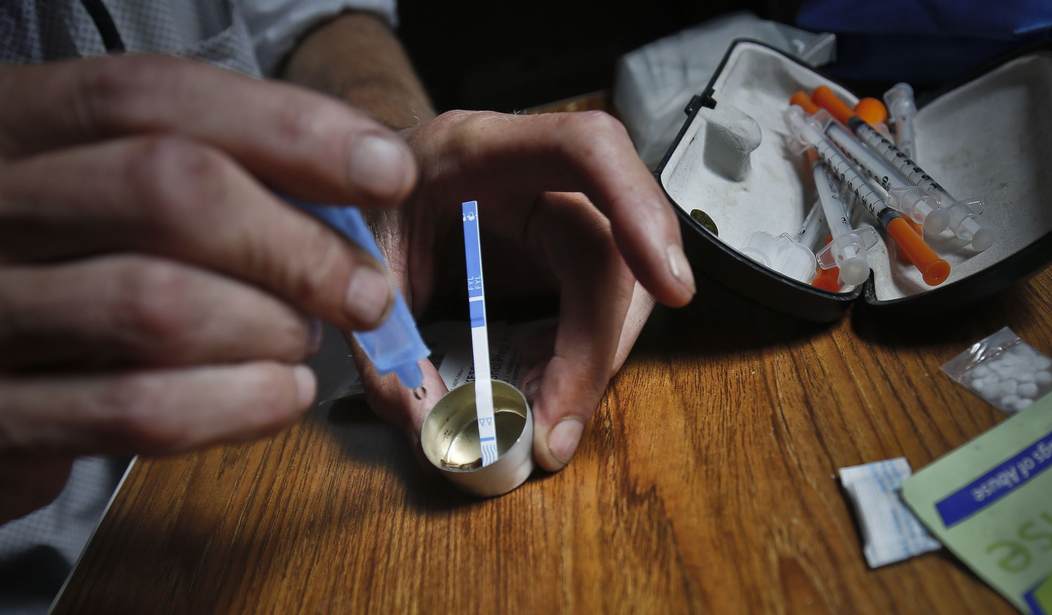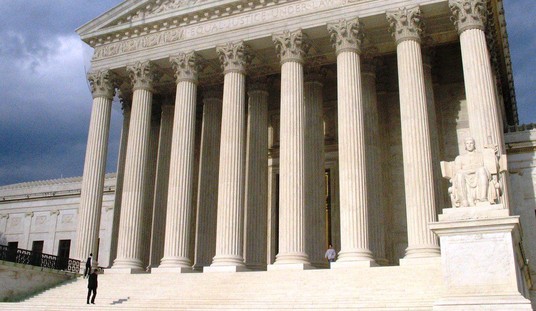According to anti-gun activists like Saira Rao, the biggest problem affecting public safety in Colorado is the Second Amendment. The founder of Here 4 The Kids launched a failed effort earlier this year to convince Gov. Jared Polis to issue an executive order suspending the sale, possession, and carrying of all firearms in the state, calling on tens of thousands of “white women” to flood the state capitol and refuse to leave until that order came down. Instead, several hundred activists showed up for the first day of the week-long protest, with numbers dwindling down to nothing within just a few days.
While Rao and other activists are myopically focused on the supposed scourge of legal guns, they’re ignoring a much bigger problem in Denver: illegal drugs. As the Denver Post eports, the number of people fatally overdosing in public is skyrocketingr, and even more residents are dying behind closed doors.
The number of people who died of overdoses in Denver public spaces more than tripled between 2018 and 2022, data from the city’s Office of the Medical Examiner show. Eighty-seven people overdosed and died in Denver’s public spaces in 2022 — up from 26 such deaths four years earlier.
This year is on pace to be even more deadly. At least 72 people overdosed and died in public during the first six months of 2023. They accounted for more than a quarter of all 265 drug deaths in Denver in that time period.
People have died in bars, in bus stations, in parks. They have taken their final breaths in a city recreation center, a liquor store, a church. In parking lots, rail yards and alleys.
The increase in public deaths is thrusting the overdose crisis further into public view, and into the lives of passersby, as city and state leaders grapple with how to respond. More and more, retail and grocery workers are the ones finding people slumped over or cold. Joggers and commuters administer first aid and call 911.
“You’re walking around and you’re like, ‘Somebody should do something and see if that person is OK,’ ” said Lisa Raville, the executive director of the Harm Reduction Action Center, which provides clean needles and supplies to drug users; its staff has responded to dozens of overdoses. “And you look around and you’re like, ‘Oh, actually, that’s me.’”
As the potent and fast-acting opioid fentanyl has come to dominate the drug supply, it has increased daily drug use for people who use it and sent overdose rates surging. Just under 1,800 Coloradans overdosed in 2022, a slight drop from the year before but well above pre-pandemic years. Denver’s overdose rate so far this year is 16% higher than last year at this point — raising fears that the plateau may have been a false peak.
Denver had 265 drug overdose deaths in the first six months of this year. Meanwhile, the number of homicides through September 11th stands at 58, according to the Denver Police Department. The city has seen more fatal overdoses in public than all homicides, and it’s not even close.
This problem is not unique to Denver, of course. When New Mexico Gov. Michelle Lujan Grisham’s attorney appeared in federal court this week in a futile attempt to defend the governor’s ban on open and concealed carry in Albuquerque, she spoke of the dual threat to public safety in the city: guns and drugs (neither of which are the fault of lawful gun owners and concealed carry licensees, by the way). Albuquerque’s violent crime rate is extraordinarily high; the 76 homicides this year are far greater than the number of murders reported in Denver, even though Albquerque has about 160,000 fewer residents. But the city’s drug problem is even worse. In fact, Bernalillo County has one of the highest overdose death rates in the nation.
In both Colorado and New Mexico, Democrats are introducing bills that would establish “safe injection sites” under the guise of a harm reduction approach to drug overdoses, yet when it comes to “gun violence” these same politicians are intent on an abstinence-based strategy; criminalizing lawful gun ownership and making firearms taboo for all.
I’m not convinced that the harm reduction model is paying any real dividends, but I know that the anti-gun moves in Colorado and New Mexico haven’t paid off. Both states have implemented a variety of new gun laws over the past few years; “universal” background checks, “red flag” laws, and other restrictions aimed directly at legal gun owners, and in neither state has there been any real impact on violent crime. If anything, crime has only gotten worse, with Colorado’s gun homicide rate doubling over the last ten years.
The harm reduction approach to combatting drug overdose deaths at least centers around those who are using illegal drugs, unlike gun control laws that are focused on those who lawfully possess and carry a firearm. Based on the latest numbers from Denver, it’s hard to argue that either approach has been particularly successful, but that won’t stop the anti-gunners from continuing to claim that real public safety is only a gun ban away.









Join the conversation as a VIP Member